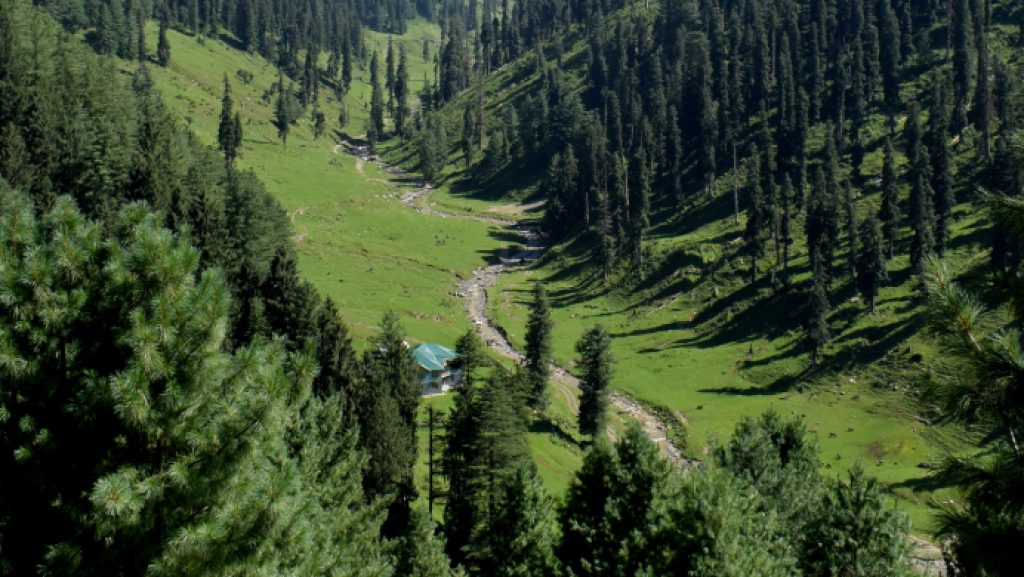
Jai Valley
Jai, the Everlasting Green Valley, lies 32 km northeast of Bhadarwah, connected via the Bhadarwah-Jai Link Road. The valley is bisected by Jai Nallah, which merges into Kalgoni Nallah, featuring waterfalls and rock formations that challenge expert rock climbers. The Jai Nallah is also famous for Trout Fish Culture. Tourists can stay at “HOLIDAY VILLAGE”, offering colorful tents and Igloo Huts, while trekkers can opt for the Youth Hostel (150 guests capacity). At Jai Top, visitors experience Nature’s Lap, surrounded by lush green coniferous trees. The valley connects to Bhalessa (46 km) via Jai-Bhalessa Road and to Kahara (27 km) via Kahara-Jai Road.Jai is an ideal spot for winter sports, open year-round and covered in snow even in summer. Visitors can camp, trek, horse ride, and enjoy cool mountain streams. The valley is also rich in wild herbs like Digitalis Purea, Aconitum, and Podophyllum. Nearby temples include ‘Subar Nag’ (4 km) and ‘Roshera Mata’ (2 km) on Subar Dhar and Rosher Dhar.
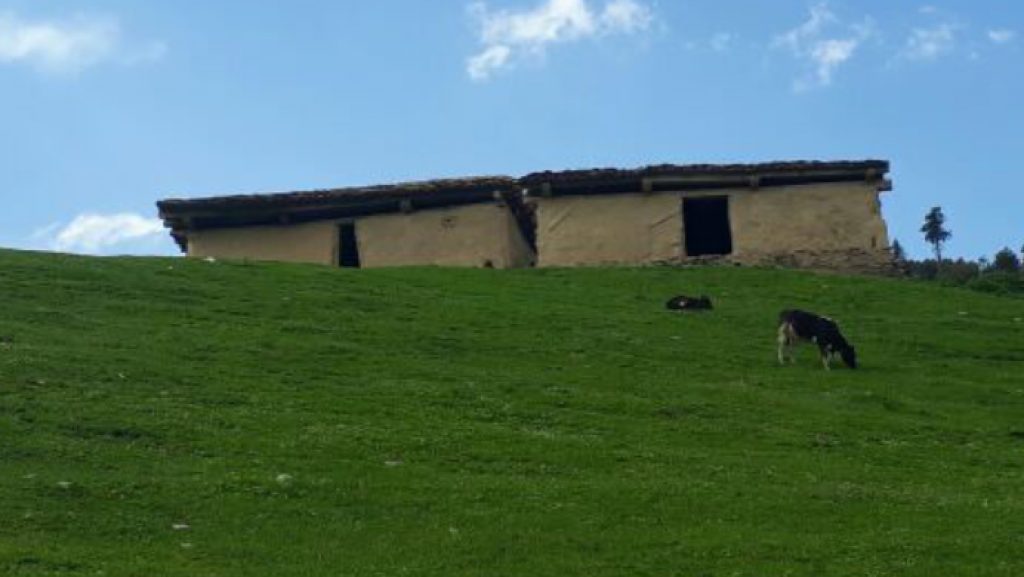
Padri
One of the beautiful landscapes, Padri, lies on the upcoming Bhaderwah-Chamba National Highway, 41 km from Bhadarwah. The landscape stretches for kilometers and is ideal for adventure sports like snow skiing in winters and paragliding in summers. It is the highest pass on the Bhaderwah-Chamba National Highway (inter-state link). Visitors must carry woolens, as Padri remains chilly even in summers.
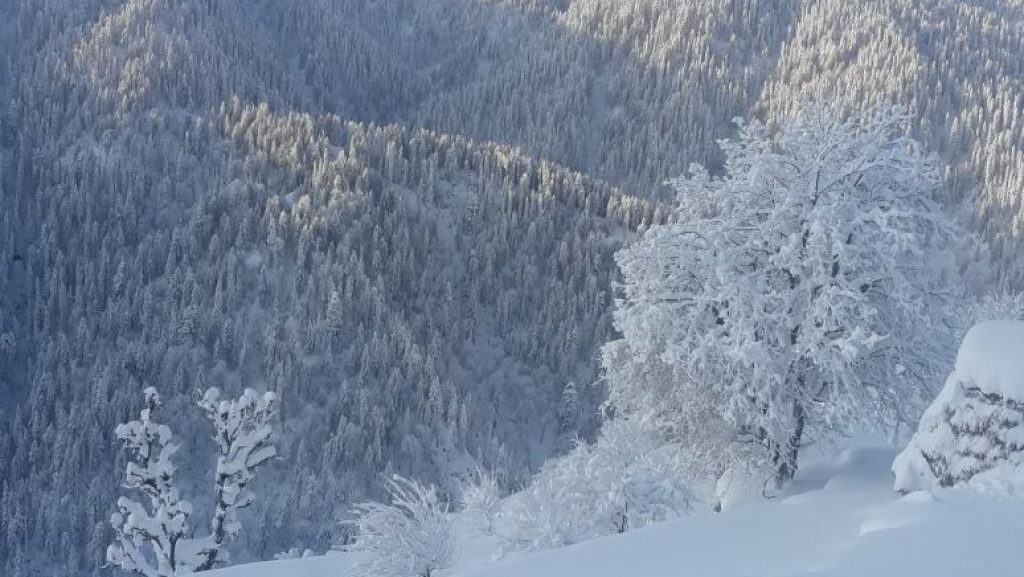
Dessa Valley
This picturesque Dessa Valley lies nestled among hills, earning the name “Devbhumi” due to its association with Vedic symbols. It is a popular picnic spot, located 280 km from Jammu Railway Station. The head post office is in Doda, with a branch post office in Gai. Dessa is now connected to Srinagar via the Dessa-Capran Road, and the first motorable bridge in Gai village is under progress. However, most of the population falls under BPL, as politicians have neglected the area, visiting only during elections. Dessa Gai is a breathtaking tourist destination, featuring lush green meadows that resemble Switzerland in winter. The surrounding mountainous belt enhances the valley’s natural beauty, rich in flora and fauna, making it a true marvel of nature.
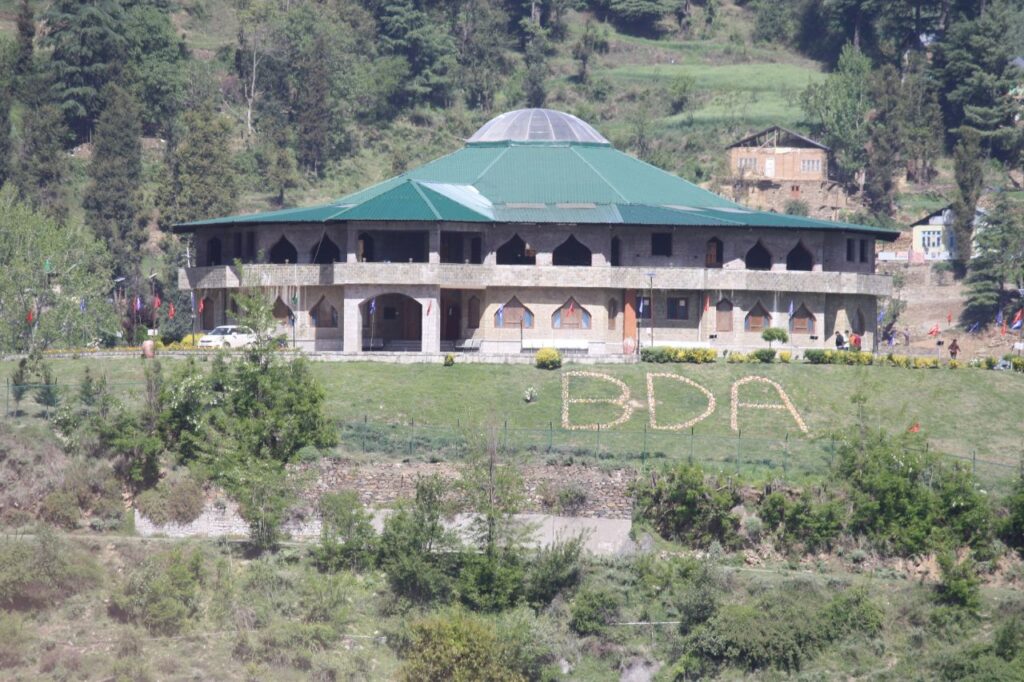
Telli Garh
Another beautiful spot namely Telli Garh has been identified for construction of Tourist Complex comprising of Nine Bed Rooms, Two VIP Suits, One Restaurant and Auditorium along with Floral and Herbal Garden is being developed.
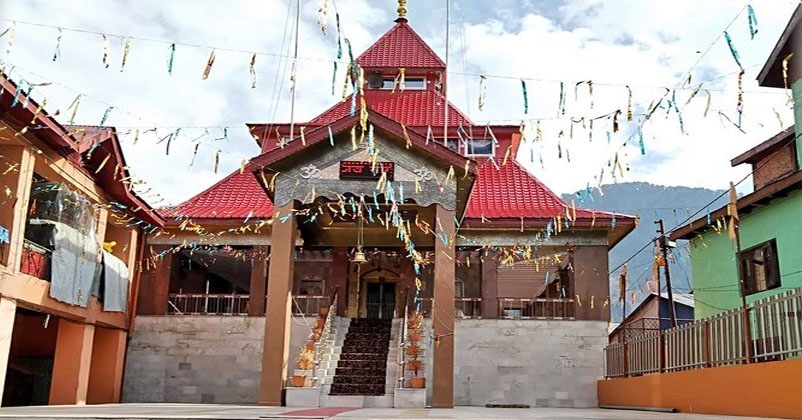
Vasuki Naag Temple
There are four Vasukinag temples in Bhadarwah: one at Gatha, second at Nalthi, third at Bheja, and fourth at Nagar Bhadarwah. But the idol of Vasukinag at Bhadarwah is marvelous and a wonder of art and sculpture. Two idols of Nagraj Vasuki and Raja Jamute Vahan are made of black stone, which stands at an angle of 87° without any support from either side. The statues have been standing as they were, on small feet in their original position for thousands of years, although the place has witnessed so many upheavals and geographical changes, including quakes of intense severity. Their inclined position can well be compared with the leaning towers of Egypt. The art of sculptures itself is of a unique type.

Jama Masjid Bhadherwah
It is a splendid mosque situated in the town and is a marvelous sample of ancient art of construction. People from far and near come to see it. Oldest Mosque in Distt. Doda (118 Years).The Jamia Masjid is one of the most imposing constructions in the town of Bhadarwah. Its impressive design arrests the eyes at once. It is a standing monument and testimony of the faith of the followers. It consists of a central building with two halls, side rooms, and four lofty minarets at the four corners. The workmanship of its architectural quality can easily compare with similar structures in the rest of India. The present Jamia Masjid has a history of its own.There was a Jamia Masjid standing about fifty yards below the present one, built on the bank of the mountain stream that flows nearby. By its sides, there existed two more buildings, the Islamia School and an orphanage. In 1928, a terrific flood engulfed the valley. It was the result of a mighty cloudburst. This deluge, the second it appears after the one in Noah’s time, as conceived imaginatively by the eminent poet Rasa Javidani, destroyed a major portion of the town along with its people and cattle. It was a major calamity to the quiet and God-fearing people of Bhadarwah. The deluge included the destruction of the old Jamia Masjid along with its School and orphanage.
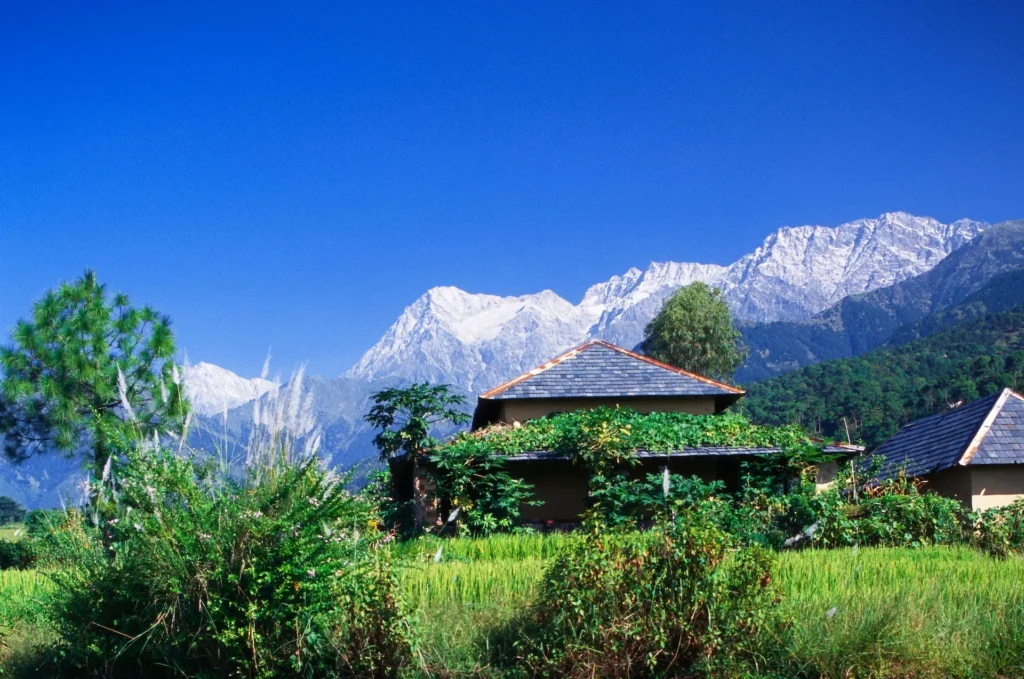
Shitla Mata Roshera
This is a very old temple of Shitla Mata. It is situated on a sloping hilltop. People continuously throng the spot from Chamba, Bani-Billawar, Kathua, Doda, Kishtwar throughout the year for paying obeisance and having the hair of their children cut, called as ‘Mundan Ceremony’, in full musical sounds. The largest and biggest Mela is observed at ‘Navratra’ on the Navratra (Ashtami), and people in thousands join this mela. There is a Dharamshala for the night stay of the pilgrims. The distance between Chinta and the Mata temple is 4 miles on foot.
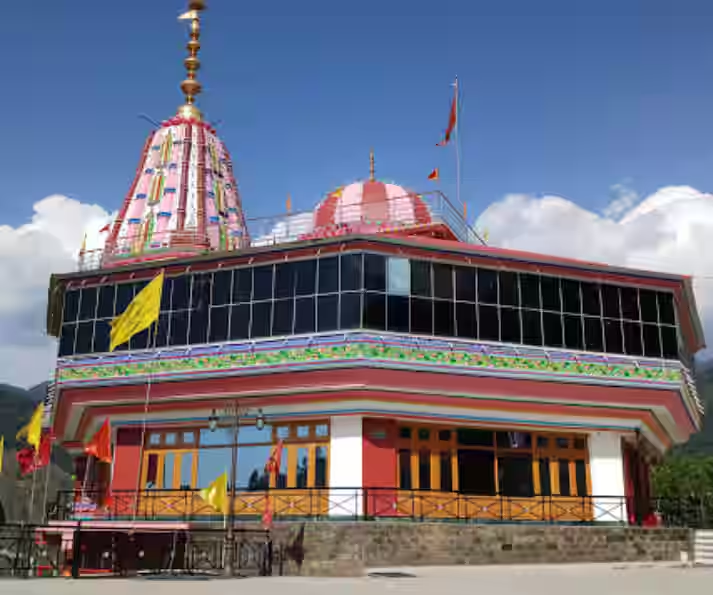
Chandi Mata Mandir Chinote
One more marvelous temple of Mata Chandi is situated at village Chinote. Every year, Trishule Bhaint Yatra comes here from Doda on 3rd July. After days of Bhajan Keertan and Bhandara, the Yatra returns to Doda in the evening. Then, on 18th August, a grand Yatra takes place, in which one lakh devotees of Mata Chandi from inside and outside the state participate. The Yatra starts from Chinote Bhadarwah to Machail and, after a one-day stay at the Bhawan of Chandi Mata at Machail (Paddar), returns to Bhadarwah. The duration of this Yatra is one month.

Nagni Mata
The holy temple of Nagni Mata is situated in Ilaqa Manthla, Malani. It is about six kilometers on foot and ten kilometers by motor road from the town of Bhadarwah. The main festival is celebrated on the first day of the month of Basakh. Thousands of pilgrims and devotees assemble there to pay obeisance to Nagni Mata. Hawan, Kirtan, and Bhajans are performed throughout the day with full devotion. Langar is arranged by the local residents of Ilaqa Manthla. A stream of clear cold water flows from beneath the sacred temple. The Jai Ghosh of Nagni Mata made by the devotees makes Mangal in the Jungle.
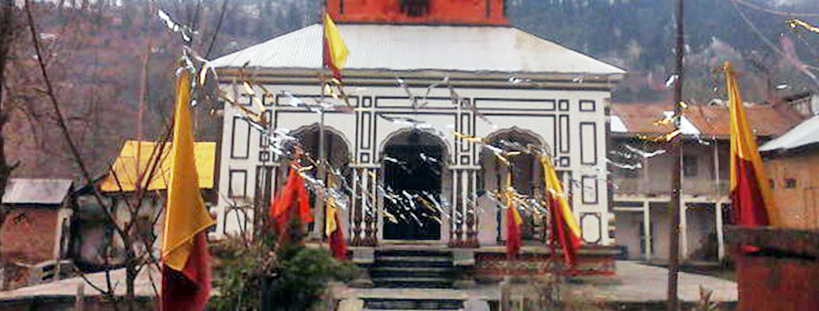
Lakshmi Narayan Temple
The Lakshmi Narayan Temple is one of the famous temples of Bhadarwah, built about a century ago by Wazir Sobha Ram, a resident of Sarolbagh and Prime Minister of Maharaja Hari Singh. Beside this splendid temple, there is a big inn for travelers. The beautiful statues of Lord Vishnu and Goddess Laxmi, made of white marble, are installed here, along with many other deities in small almirahs on the outer walls. A small path surrounds the temple for devotees. The grand entrance gate, high and wide, enhances the temple’s beauty. It is said that about one lakh rupees were spent on its construction, at a time when wages were just a few paisa. In those days, currency was in silver coins. For the installation ceremony, Wazir Sobha Ram Ji organized a grand Yajna, Havan, and Bhandara, inviting learned Brahmins. Noticing the absence of Sangan Brahmins from Chinote due to a boycott, he insisted their presence was essential. He sent a delegation to request them, and upon his assurance, they participated. Wazir Ji later visited Vasuki Nag Ji temple to apologize, thus ending a centuries-old enmity and boycott.
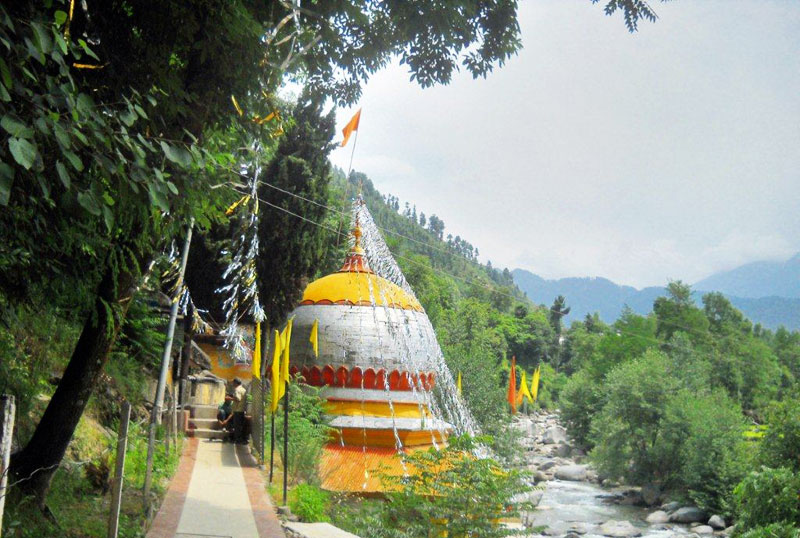
Gupt Ganga Temple
To the east of Bhadarwah, on the bank of river Neru, 0.5 km from the town, lies the ancient Shiv Temple, built with pure stone slabs in a tomb-like structure. Here, Ganga water abruptly falls on the Lingam and disappears. Inside, a footprint of Bhimsen is imprinted on a rock. A long cave, believed to have been used by the Pandavas during Agyat-Vaas, leads to Kashmir. This historical pilgrimage site, known as Gupt Ganga, is near the first bridge on Bhadarwah-Jai Road. The dome is made of circular stone slabs, and a mysterious stream of pure water flows inside, continuously dripping on the Shivling before collecting in a Bawali (pond). The Bawali water remains cold in summer and warm in winter, and is considered as sacred as the Ganga.The Shivling, made of huge black marble, was brought from outsink and polished using local materials. A tunnel near the temple, believed to be linked to the Pandavas’ escape, was explored 60 years ago but was later sealed due to breathing difficulties inside. In the northwest of the Shiv temple, a splendid rock structure called Barahdari stands, featuring three doors on each wall. Nearby, on the Bhadarwah-Chinta road, lies the Baba Ganga Dass Ji Temple, housing a grand statue of Baba. A beautiful garden adds to the serenity of the site.
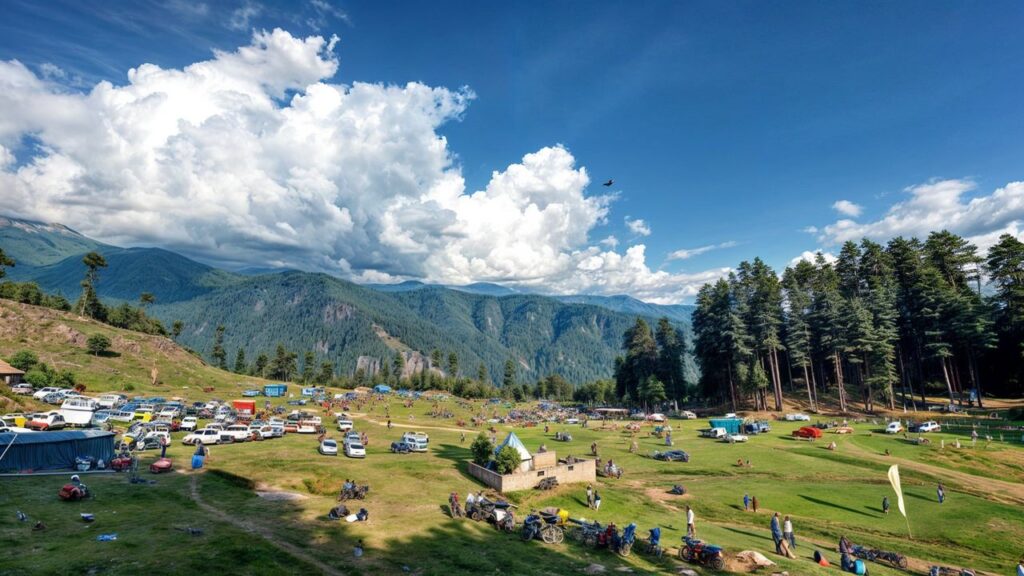
Devi Gol
This temple is in “Pat Nazi” area. Among this, the temple is erected on a vast ground between the cluster of Deodar trees. In the North East of this temple, there is a mysterious “Bawali” (Pond) in the middle of lush green land. The water of this “Bawli” is cold and sweet. The speciality of this Bawli is that the water flows to it neither from any corner nor from any side, but comes from the center of its bottom in the shape of a fountain. The bubbles of water then come to the surface. In these bubbles, half-burnt barley grains of “Havan” come and settle down at the bottom. People believe that these half-burnt barley grains of the “Havan Kund” of Jawalaji temple of Kangra are to be presented to Mata “Devi Gol”. People bring those half-burnt barley grains with great devotion to their homes.
